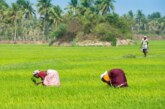Jallianwala Bagh massacre
By Dr Arvind Kumar
13th April this year marks the 92nd Anniversary of the 1919 Amritsar massacre, also known alternately as the Jallianwala Bagh massacre: for after the Jallianwala Bagh in the northern Indian city of Amritsar where, on April 13, 1919 (which happened to be ‘ Baisakhi’ one of Punjab’s largest religious festivals) fifty British Indian Army soldiers, commanded by Brigadier-General Reginald Dyer, began shooting at an unarmed gathering of men, women and children without warning. The shooting lasted for ten to fifteen minutes, until ammunition ran out. Dyer ordered soldiers to reload their rifles several times and they were ordered to shoot to kill. Official British Raj sources estimated the fatalities at 379, and with 1,100 wounded. Civil Surgeon Dr Smith indicated that there were 1,526 casualities. However, the casualty number quoted by the Indian National Congress was more than 1,500, with roughly 1,000 killedHunter Commission, a commission of inquiry into the massacre was established during late 1919. The Hunter Commission did not award any penal nor disciplinary action because Dyer’s actions were condoned by various superiors (later upheld by the Army Council). However, he was finally found guilty of a mistaken notion of duty and relieved of his command. On March 13, 1940, at Caxton Hall in London, Udham, an Indian patriot from Sunam who had witnessed the events in Amritsar and was himself wounded, shot and killed Michael O’Dwyer, the British Lieutenant-Governor of Punjab at the time of the massacre, who had approved Dyer’s action and was believed to be the main planner. Reginald Dyer himself had died in 1927. It is the solemn occasion for all of us to pay our glowing tributes to the martyrs of Jallianwala Bagh.



